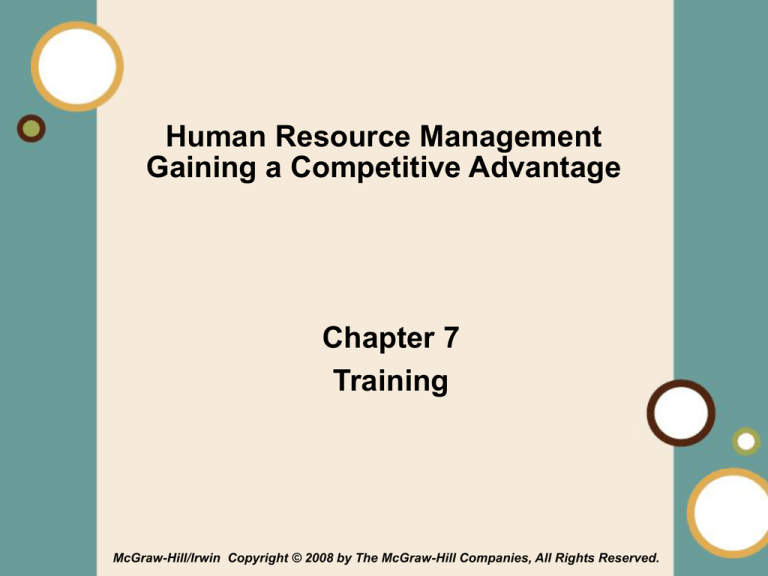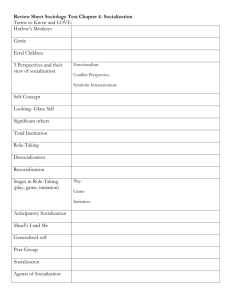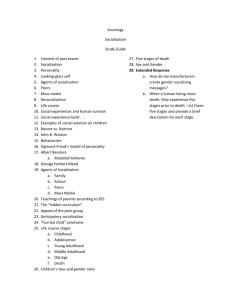
Human Resource Management
Gaining a Competitive Advantage
Chapter 7
Training
McGraw-Hill/Irwin Copyright © 2008 by The McGraw-Hill Companies, All Rights Reserved.
1-1
Learning Objectives
After reading this chapter, you should
be able to:
• Discuss how training can contribute to
companies’ business strategy.
• Explain the role of the manager in identifying
training needs and supporting training on the
job.
• Conduct a needs assessment.
• Evaluate employees’ readiness for training.
• Discuss the strengths and weaknesses of
presentation, hands-on, and group training
methods.
7-2
Learning Objectives
After reading this chapter, you should
be able to:
• Explain the potential advantages of e-learning
for training.
• Design a training session to maximize learning.
• Choose an appropriate evaluation design based
on training objectives and analysis of
constraints.
• Design a cross-cultural preparation program.
• Develop a program for effectively managing
diversity.
7-3
Training can...
• Increase employees’ knowledge of
foreign competitors and cultures.
• Help ensure that employees have the
basic skills to work with new technology,
• Help employees understand how to work
effectively in teams to contribute to
product and service quality.
7-4
Training can...
• Ensure that the company’s culture emphasizes
innovation, creativity, and learning.
• Ensure employment security by providing new
ways for employees to contribute to the
company when:
– their jobs change
– their interests change
– their skills become obsolete
• Prepare employees to accept and work more
effectively with each other, particularly with
minorities and women.
7-5
Training
• Training is a planned effort by a company to
facilitate the learning of employees.
• High-leverage training:
– is linked to strategic business goals and
objectives,
– has top management support,
– relies on an instructional design model, and
– is benchmarked to programs in other
organizations.
• Continuous learning is a learning system that
requires employees to understand the entire
work process and expects them to acquire new
skills, apply them on the job, and share what
they have learned with other employees.
7-6
Designing Effective Training
Activities
The Training Process
1. Needs Assessment
• Organizational Analysis
• Person Analysis
• Task Analysis
2. Ensuring Employees’ readiness for Training
• Attitudes and Motivation
• Basic Skills
3. Creating a Learning Environment
• Identification of learning objectives and training outcomes
• Meaningful material
• Practice
• Feedback
• Observation of others
• Administering and coordinating program
7-7
Designing Effective Training
Activities (cont.)
The Training Process
4. Ensuring Transfer of Training
• Self-management strategies
• Peer and manager support
5. Selecting Training Methods
• Presentational Methods
• Hands-on Methods
•Group Methods
6. Evaluating Training Programs
• Identification of training outcomes and evaluation design.
•Cost-benefit analysis
7-8
Needs Assessment
Organizational Analysis
Person Analysis
Task Analysis
7-9
Ensuring Employee Readiness
for Training
• Motivation to learn is the desire of the
trainee to learn the content of the training
program.
• Self-efficacy is the employees' belief
that they can successfully learn the
content of the training program.
7-10
Ensuring Employee Readiness
for Training
• Managers can increase employees' self-efficacy
level by:
– Letting employees know that the purpose of training is
to try to improve performance rather than to identify
areas in which employees are incompetent.
– Providing as much information as possible about the
training program and purpose of training prior to the
actual training.
– Showing employees the training success of their
peers who are now in similar jobs.
– Providing employees with feedback that learning is
under their control and they have the ability and the
responsibility to overcome any learning difficulties
they experience in the program.
7-11
Basic Skills
Cognitive Ability verbal
comprehension,
quantitative
ability, and
reasoning ability
S
K
I
L
L
S
Reading Ability the difficulty
level of
written
materials
7-12
Creating a Learning
Environment
• Employees need to know why they
should learn.
• Employees need meaningful training
content.
• Employees need to have opportunities to
practice.
• Employees need feedback.
7-13
Creating a Learning
Environment
• Employees learn by observing,
experiencing, and interacting with others.
• Employees need the training program to
be properly coordinated and
aadministered.
• Employees need to commit training
content to memory.
7-14
Transfer of Training
Climate for
transfer
Opportunity to use
learned capability
Technological
Support
Transfer
of
Training
Self-management
skills
Manager support
Peer Support
7-15
Selecting Training Methods
• Presentation Methods
– Instructor-led classroom
instruction
– Distance learning
– Audiovisual techniques
– Mobile technologies
• Hands-on Methods
–
–
–
–
On-the-job training
Self-directed learning
Simulations
Business games and case
studies
– Behavior modeling
– Interactive video
– E-learning
7-16
Outcomes Used in Evaluating
Training Programs
OUTCOME
WHAT IS MEASURED
•Acquisition of
Knowledge
HOW MEASURED
•Pencil and paper tests
•Work sample
Skill-based Outcomes
•Behavior
•Skills
•Observation
•Work sample
•Ratings
Affective Outcomes
•Motivation
•Reaction to Program
•Attitudes
•Interviews
•Focus groups
•Attitude surveys
Results
•Company Payoff
Return on Investment
•Economic value of
Training
Cognitive Outcomes
•Observation
•Data from information system
or performance records
•Identification and comparison
of costs and benefits of the
program
7-17
Evaluation Designs
• Pretest/Posttest
with Comparison
Group
• Posttest Only
• Posttest only
with comparison
Group
• Pretest/Posttest
• Time Series
7-18
Determining Return on Investment
• Cost-benefit analysis is the process of
determining the economic benefits of a
training program using accounting
methods.
• Determining costs
• Determining benefits
• Making the analysis
7-19
Cross-Cultural Preparation
• An expatriate is an employee sent by his or her
company to manage operations in a different
country.
• To be successful in overseas assignments,
expatriates need to be:
– Competent in their area of expertise.
– Able to communicate verbally and nonverbally in
the host country.
– Flexible, tolerant of ambiguity, and sensitive to
cultural differences.
– Motivated to succeed, able to enjoy the
challenge of working in other countries, and
willing to learn about the host country’s culture,
language, and customs.
– Supported by their families.
7-20
Three Phases of Cross-Cultural
Preparation
Phase One:
Predeparture Phase
Phase Two:
On-Site Phase
Phase Three:
Repatriation Phase
7-21
Managing Workforce Diversity
• Managing Diversity is the process of
creating an environment that allows all
employees to contribute to organizational
goals and experience personal growth.
• Types of diversity training:
– Attitude awareness and change programs
– Behavior based programs
7-22
Socialization and Orientation
• Organizational socialization is the
process used to transform new
employees into effective company
members.
• The three phases of socialization are:
Encounter
Anticipatory
Socialization
Settling In
7-23
Three Phases of Socialization
• Through anticipatory socialization,
expectations are developed about:
–
–
–
–
the company
job
working conditions
interpersonal relationships
• The encounter phase occurs when the
employee begins a new job.
7-24
Three Phases of Socialization
• In the settle-in phase, employees start
to feel comfortable with job demands and
social relationships.
• Orientation programs play an important
role in socializing employees. It involves
familiarizing new employees with:
– company rules,
– policies,
– procedures
7-25







